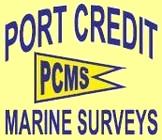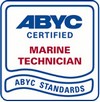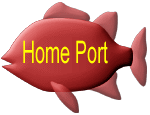 Port Credit Marine Surveys & Yacht Delivery Society of Accredited Marine Surveyors  American Boat & Yacht Council |
HIN / MIC translates as ... "Hull Identification Number / Manufacturers Identification Code  |
|
| 1. What are HIN's The HIN/MIC usually referred to as the HIN has been required on all boats manufactured or imported into the USA since November 1, 1972. In 1981 Transport Canada agreed to piggyback on the US system and require the same on all Canadian vessels. Prior to 1981 Canadian builders may or may not have marked these codes on their boats depending on whether or not the boat was being exported to the USA. Europe now also follows this system (more or less when they feel like it). There has been discussion over the last few years of moving to a 17 digit system like the VIN on your car but bureaucracy being what it is, it may not happen in our lifetime. A 17 digit system would provide a lot more information and be more easily traceable. Each part of the code has some meaning and it's really pretty simple except that over the years the format has been modified so that there are four different versions out there now. The rules for placement of the HIN's are also pretty simple although some manufacturers still struggle with these elementary instructions........... |
||
| A. | In the case of the 12 character HIN, the
first three characters are assigned by the
USCG and these three identify the manufacturer
or importer. Get the three characters from
your hull and you can search the USCG datbase for builder/importer contact
info and even check the Recalls Database to see if there are any active recalls on
file or get the mailing address of the importer
or builder and whether or not they are still
in business.. |
| B. | With a 15 character HIN, the first two characters
(optional) identify the country of
build.
ie. FR indicates France. These two
characters
are separated from the balance of the
code
with a dash and this is counted as
a character.
This has some importance if you are
importing
a boat across the USA/Canadian border
in
either direction as they will be subject
to duty unless built in a NAFTA country. |
| C. | There are no spaces allowed in the HIN. I
have inserted a few spaces in my diagrams
for clarity. |
| D. | The characters must be at least 1/4"
high. |
| E. | If additional information is displayed within
2" of the HIN, that information
must
be separated from the HIN by means
of borders,
or must be on a separate label so that
it
will not be interpretated as part of
the
HIN. |
| F. | The HIN must be marked on the upper starboard
transom or the upper starboard topsides,
aft, if the vessel has no transom. |
| G. | The HIN must be marked in a fashion such
that tampering will deface the hull. |
| H. | Date of manufacture must be no later than
the date the vessel leaves the place
of manufacture
or assembly or is imported into the
US for
the purposes of sale. |
| I. | As of August 1, 1984 manufacturers were required to mark an identical copy of the visible HIN in a hidden location in the vessel. AThis is meant for law enforcement use only although as a surveyor I have been provided this information by a couple of manufacturers. |











